I always love planning my next trip during my free time. I haven’t met one person in my lifetime who didn’t have a desire to travel.
Some people had a stronger wish to see more countries but there was never an individual that didn’t say traveling was a goal of theirs.
Although this is my personal experience, I would wager that a vast majority of people wish to see at least one other country and culture.
There is something liberating and exciting about packing a bag, buying a flight, and hitting the open road. Unfortunately, many people are distracted or discouraged by all of the requirements for planning a vacation.
In an attempt to help people navigate this red tape, I have compiled a list of steps you can take to travel. Here are 18 steps for teaching you how to plan a vacation:
Step 1: Choose A Destination

sondem / Shutterstock
Choosing a destination is the first step in planning a trip. Many people are too vague when they talk about traveling. In this way, travel becomes more of an idea than a fixed decision.
Defining a destination is the best way to solidify your desire to travel. A destination can be a clear goal for which to work. It’s easier to work towards a trip to Rome. Nobody can begin planning a trip to “somewhere” without wasting time and resources.
Choosing a destination is the beginning of the realization of your dream to travel. Without this first step, you may be wondering how to plan a trip forever.
Step 2: Determine A Length For The Trip
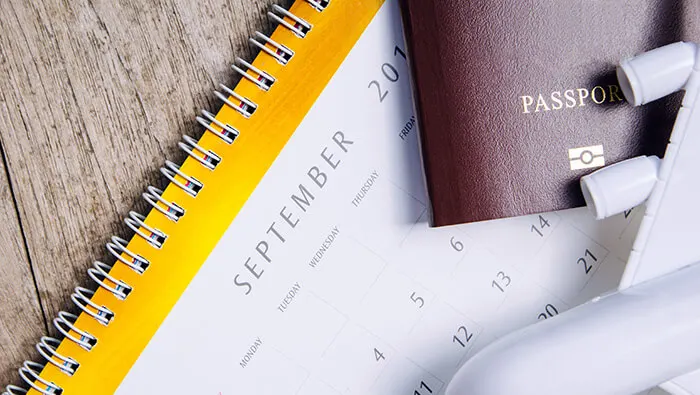
NUM LPPHOTO / Shutterstock
When planning a vacation, many people worry about the cost too early along in the planning process. Without first determining a length for a trip, it is nearly impossible to estimate the costs.
Once you’ve determined a location for your vacation, it is time to choose a length of time. Some people will have a pre-determined vacation length due to work or other professional constraints.
For those who don’t have these restrictions, visas or savings may also help determine the length of a trip. No matter how long you choose to travel, it is important to have a defined length to simplify the rest of the planning process.
Step 3: Conduct Research On Costs And Expenses

Prostock-studio / Shutterstock
Now that you’ve determined the location and length of your trip, it’s time to conduct some research regarding costs. It’s very difficult to determine the cost of a trip without learning more about the destination.
The style of your travels will also help determine the overall cost of the trip. For example, travelers who want to stay in nice resorts and eat at expensive restaurants will end up spending more.
On the other hand, budget backpackers who sleep in hostels and eat at street stalls will spend much less. Once you decide on a traveling style, you’ve got to understand the costs that your trip will incur (i.e. cost of restaurants, hotels, attractions, hostels, etc.)
This information will help you estimate the price of your trip overall. Here are a few travel tips for determining the costs of your trip by location:
- Purchase a guidebook on that particular location.
- Join online chats or forums that discuss pricing in certain destinations.
- Conduct a Google search for the prices of specific items, accommodation, or attractions.
- Read related blog posts on travel websites.
These resources should provide more than enough information to develop an accurate estimate of your trip’s overall cost. There’s a plethora of information online regarding prices for restaurants, attractions, hostels, and groceries in locations around the world.
Avoid the temptation to go overboard in the planning process.
Here’s an example:
If you’ve determined that your trip of 10 days will cost an average of $70 per day (excluding flight), then the vacation will cost $700 overall.
This provides you with a clear goal for which to aim when planning and saving for the trip. You will always be wondering how to plan a trip if this step isn’t covered.
Step 4: Start Making And Saving Money
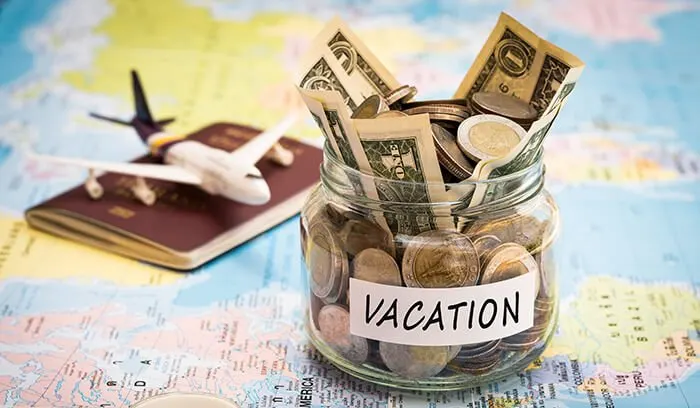
surasaki / Shutterstock
After you’ve determined the overall cost of your trip, it’s time to collect that amount of money. It’s advisable to keep a detailed list of your weekly and monthly expenses to have a clear idea of where your money is being spent.
This also makes it easier to determine in which areas spending can be cut or eliminated altogether. People tend to incur a lot of unnecessary expenses on a daily basis.
Although these smaller expenses may seem minuscule in comparison to the cost of your trip overall, each dollar counts. You may not realize how much money can be saved until you cut these expenses.
It’s a great idea to breakdown your required savings into a daily amount.
For example, if you need $700 for a vacation you’re taking in five months, you’ll need to save around $4.66 per day. That’s nearly the price of a cup of Starbucks coffee.
Step 5: Apply For Travel Rewards Credit Cards

Jeramey Lende / Shutterstock
Every credit card comes with some added benefits. While some of these focus on cashback rewards, there are others that offer travel deals. When saving for a trip, it’s important to sign up for some of these travel credit cards in order to receive their benefits.
There are credit cards that offer free hotel stays, discounted flights, restaurant deals, and more. Many cards offer 50,000 points/miles or more towards their flight programs after you exceed their spending requirements.
This minimum spending threshold is usually around $1,000 for the first three months of having the card. These miles could earn you a flight to your destination.
It’s important to sign up for a card that offers the rewards which you prefer. If you want to earn a free flight, sign up for cards associated with airlines. If you prefer to have free hotel stays, apply for a hotel card.
It’s not necessary to sign up for every credit card that offers travel rewards. It’s better to choose a few that are pertinent to your personal needs and preferences.
A majority of the “professional” travelers have mastered the art of collecting miles and points through credit cards that offer travel rewards. Utilizing these cards correctly could mean the difference between a week-long vacation and years of travel.
Step 6: Find An ATM Card That Doesn’t Charge Fees

RossHelen / Shutterstock
Although larger expenses will take a larger chunk of money, the real enemies to your savings account are small, reoccurring expenses. ATM fees are an example of these small charges that should be avoided at all costs.
Before embarking on your trip, it’s important to find a card that doesn’t charge fees to withdraw money from an ATM. Charles Schwab and banks within the Global ATM Alliance don’t charge these fees.
Step 7: Remain Inspired And Focused

Vadim Georgiev / Shutterstock
Planning for a trip can be a daunting and stressful process. This is especially true when your family members or friends aren’t enthusiastic about your vacation. Unfortunately, this lack of support often leads many people to lose their own excitement and desire to travel.
It’s important to remain inspired and focused before your trip begins. Luckily, there are many ways to keep that flame alive before embarking on your journeys.
Here are a few of these methods:
- Read inspiration books about travel and adventure.
- Read personal blogs that travelers write about their experiences.
- Follow some full-time travelers on social media and engage with their content.
- Stay up-to-date on news regarding your chosen destination.
- Watch movies about traveling.
- Don’t listen to naysayers or detractors.
Step 8: Look For Last-Minute Discounts And Deals

Antonio Guillem / Shutterstock
Before you purchase a flight or book a hotel, it’s important to look for last-minute discounts or deals. If you find the right offer, you could save hundreds on your vacation.
Even though you’ve already chosen a destination, it can’t hurt to look for last-minute deals. You might find an offer that’s too good to pass up.
Instead of a trip to Rome, you may opt for a two-week cruise around the Mediterranean that is 50% off. These deals are often good enough to make travelers reconsider their chosen destination.
Flexibility is one of the most important factors of a successful and budget traveler. It’s a large planet, and there are endless places to visit. If you end up choosing destination B over destination A, you can still have an amazing vacation.
If you’re a flexible traveler, you could save a significant amount of money. These savings can be put towards a longer vacation.
Here are a few websites that are worth checking for last-minute discounts and deals:
Step 9: Take Care Of Any Country-Specific Requirements
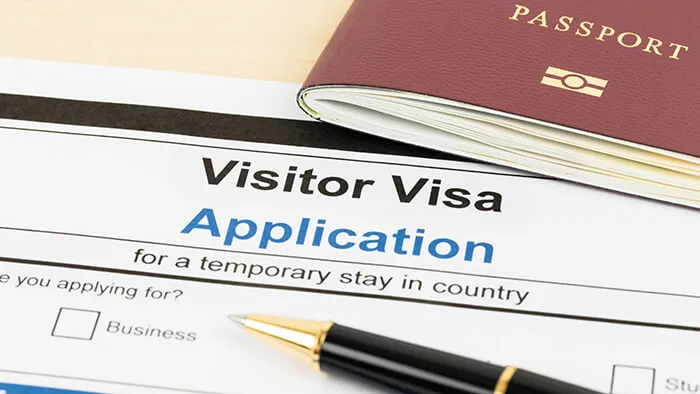
Casper1774 Studio / Shutterstock
Each country is going to have specific requirements that may differ from other destinations. Visas and vaccinations are the most important requirements to keep in mind when planning your dream vacation.
For example, most countries in Europe don’t require U.S. citizens to apply for a visa. Instead, a U.S. passport acts as a tourist visa. However, other countries such as China and Nepal require U.S. citizens to apply for a visa in order to enter the country.
The same is true in regards to some vaccinations. There are some countries that require proof of vaccinations upon arrival.
It’s imperative that you check any country-specific requirements before embarking on your flights.
Step 10: Book The Flight

Rawpixel.com / Shutterstock
After you’ve applied for the travel credit card and met the minimum spending limit, you should receive your reward miles.
In the past, it was easy to book flights using these miles or points without any hassle. Today, the process is slightly more difficult due to a lack of availability. More travelers have started participating in these reward programs.
In order to find the best deals, it’s important to book a flight well in advance. Spending reward miles is the same as spending money on a flight. With each passing day, more travelers will purchase tickets on the same flight and the ticket prices will rise.
When redeeming points for a flight, the cost of the ticket will show in points instead of dollars. The cost of the ticket in points will continue to rise the longer you wait to purchase the ticket.
In order to find your desired flight at an affordable rate, it’s crucial to book ahead of time.
Fortunately, there are many resources that can be used to save money on a flight. Here are a few of the best sites to use when searching for a flight:
- Momondo – This is a great platform to use when searching for super cheap flights.
- Skyscanner – This is the best website for comparing the costs of flights depending on location and date.
- Kiwi – This website is a great option for finding routes that are lesser-known. Flights on Kiwi are operated with smaller carriers.
- AirTreks – Aitreks is the best site for searching deals on flights with multiple destinations or round-the-world tickets.
In order to find the cheapest deals, it’s important to book your flight at least two months before the departure date.
Step 11: Book The Accommodation
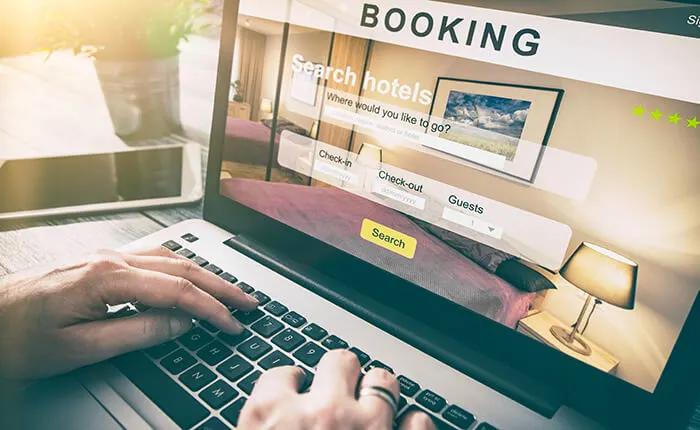
REDPIXEL.PL / Shutterstock
Once your flights have been confirmed, you can safely book your accommodation. It’s advisable to wait until your flight bookings have been confirmed. A delay or schedule change by even a day could cost a lot of money.
Booking accommodation after your flight dates have been confirmed helps to protect against these potential issues.
If you’re traveling with a fixed schedule, it’s important to book all of your accommodation before leaving. This will result in better deals, more availability, and lower prices overall.
If your trip will last longer than a few weeks, it’s enough to book accommodation for the first few days.
Once your travel dates are determined, there’s no reason to wait for booking accommodation.
If you love to stay in hotels, you should consider signing up for loyalty programs or hotel credit cards to save some money in the long run. Although hotel rooms are cozier and more convenient, they are also significantly more expensive.
Marriott has an excellent rewards card that offers a hefty sign-up bonus equivalent to a one week’s stay. Starwood offers an American Express card with excellent deals as well, but the spending threshold for this card is significantly higher.
Here’s a list of the best sites for finding cheap accommodation:
- HostelWorld – This is the best platform for finding a wide selection of cheap hostels.
- Agoda– Although this site isn’t as popular as others, Agoda will yield the best results when traveling in Asia.
- Booking.com – While Booking.com is known for its pricey listings, this platform is still great for finding affordable accommodation in the form of hostels, guest houses, vacation rentals, and more.
For those budget travelers who desire accommodation for free, there are some viable alternatives. You can start by contacting hosts on site like WWOOF, Be Welcome, or Couchsurfing and ask if they will host you for a night or two.
Step 12: Plan Some Activities

kitzcorner / Shutterstock
No vacation would be complete without some fun activities. It’s helpful to outline some of the places you want to see and activities which you’d like to do.
Prepping this outline before a trip will make it more likely that each activity can be done. This preparation will also help you decide if any budget adjustments are required.
Step 13: Sell Your Belongings

Monkey Business Images / Shutterstock
If you’re planning to travel for more than six months, you should consider selling some belongings. This will accomplish a few worthwhile goals.
First and foremost, you’ll have some extra cash to spend on vacation. You may be surprised by how much money all of your stuff is worth. Secondly, you won’t have to pay for storage while you’re gone.
Here are some excellent sites for selling your stuff:
- Gumtree – A site for selling goods with a specific focus in Australian and UK markets.
- Amazon – Amazon is the largest online marketplace in the world. This means more potential buyers.
- Craigslist – Craigslist is an online platform full of global classifieds.
For those long-term travelers who wish to keep their belongings, storage units can be rented for as low as $50 per month. If you don’t have this much money to spend, you can house your belongings at the home of a friend or relative.
Step 14: Automate The Bills

panuwat phimpha / Shutterstock
Even though you may be leaving for a trip, that doesn’t mean other aspects of your life will change as well.
Before you leave for a trip, set up all of your mail for paperless options. You should also contact your bank to set up automated bill payments. This simplified the payment process and ensures you don’t miss any due fees when traveling.
If you still need to receive paper mail, you can use a service like Earth Class Mail. These services will open and scan your mail while you’re traveling.
If you’re only planning to travel for a few weeks, these steps may not be necessary.
Although some people choose to make these changes without traveling. Online mail is much faster, easier, and more environmentally friendly.
Step 15: Notify Your Credit Card Companies

WAYHOME studio / Shutterstock
There’s nothing more frustrating or potentially hazardous than having your credit card flagged during a trip. Credit card companies often utilize automatic blocks on cards when they are used abroad. This is a way to keep users safe from hackers.
However, having your card blocked during vacation could be an unintended consequence of these protections. In order to ensure you always have access to a card abroad, it’s imperative to notify your credit card companies.
Most companies will ask which countries you’re traveling to and lift the protections for these places.
Step 16: Pack, Pack, Pack

Pixel-Shot / Shutterstock
Most travelers have mixed feelings about packing. Although it’s an exciting step in the traveling process, it can also be stressful reducing your belongings for a trip.
It’s important to find a balance between having what you need and packing too much. Overpacking will lead to uncomfortable walks, higher transportation fees, and an overall hassle that can be avoided by taking less.
You can always buy more items abroad if you forget something important. It’s more difficult to get rid of belongings if you have taken too much.
A good rule of thumb when packing is to remove 20% of what you pack originally. The leftover amount should be enough for a trip lasting a few months.
Less is certainly more when you consider how long you’ll have to drag this bag around while on vacation.
Step 17: Buy Travel Insurance For Coverage
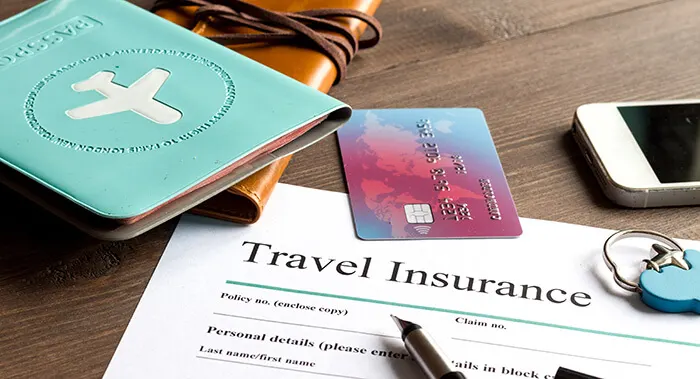
279photo Studio / Shutterstock
Many people make the mistake of forgetting about travel insurance or forgoing the coverage altogether. Some individuals don’t think their chances of getting sick on vacation are high. In their eyes, there is no reason to buy travel insurance while on vacation.
It’s important to realize that travel insurance covers much more than sick visits or regular doctors appointments. When you travel for longer periods of time, you’ll need much more than medical protection.
This type of insurance covers travelers when their luggage is stolen, a flight is delayed or canceled, an expensive computer breaks, and much more. Most travel insurance will even cover a flight home if a family member gets sick.
Travel insurance is a must-have for travelers to a foreign country. You don’t know what could happen, and a majority of health plans that operate in the U.S. won’t be able to cover you abroad.
I never expected my eardrum to pop while scuba diving or lost my camera in Prague. My friend didn’t expect to break his foot while hiking. Another friend of mine certainly didn’t think her friend would pass away, and she would have to fly home so early into her trip.
Travel insurance is a minimal cost that can end up saving you thousands of dollars if something bad were to happen. Fortunately, there are many different providers that can customize a plan for your particular trip.
For example, a trip to the Himalayas will require coverage in higher altitudes than a trip to Guam. It’s important to consider what you’ll be doing on the vacation to determine what kind of coverage is sufficient for your particular case.
World Nomads is my favorite provider of travel insurance. I have been using this platform for over 10 years and have never had any issues.
For those travelers older than 70, Insure My Trip is the best provider for seasoned travelers.
Step 18: Have Fun On Your Trip

Olesya Kuznetsova / Shutterstock
While there are many blogs for teaching readers how to plan a vacation, a majority of these websites forget about the most important component of traveling: having fun.
Once you’ve finalized all of your bookings and activities, it’s time to focus on enjoying the trip. You may be surprised by how many people spend months or years dreaming about a vacation only to hate it in the end.
While some people genuinely have bad experiences abroad, many of these travelers suffer from a poor attitude or bad perspective.
Taking your dream trip can be the most exciting and exhilarating experience of your life. However, it takes some positive thinking, patience, and a proactive attitude.
Next time you’re stuck wondering how to plan a vacation, use these 18 steps to make the process much easier.
In fact, you should share these strategies with any friend or family member who isn’t sure how to plan a trip.

